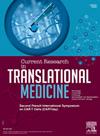Green solvent-based synthesis of diclofenac diethylamine-loaded PCL nanoparticles for sustained drug delivery
IF 3
4区 医学
Q2 MEDICINE, RESEARCH & EXPERIMENTAL
引用次数: 0
Abstract
Background
Diclofenac, a non-steroidal anti-inflammatory drug (NSAID), has demonstrated promising antitumor properties; however, its clinical application is limited by systemic toxicity. Encapsulation in biodegradable polymeric nanoparticles offers a strategy to enhance therapeutic efficacy while minimizing adverse effects. Nevertheless, the use of toxic organic solvents in nanoparticle fabrication remains a significant challenge.
Objective
This study aimed to develop and characterize diclofenac diethylamine-loaded polycaprolactone (PCL) nanoparticles using green solvents and to compare two preparation methods-emulsification solvent evaporation/extraction and spontaneous emulsification solvent diffusion-for producing diclofenac-loaded nanoparticles with potential applications in tumor therapy.
Methods
Diclofenac diethylamine-loaded PCL nanoparticles were prepared using both methods, employing a novel green solvent system. The nanoparticles were characterized in terms of size, polydispersity index (PDI), zeta potential, morphology, and encapsulation efficiency. In vitro drug release profiles were evaluated and fitted to kinetic models.
Results
The developed diclofenac diethylamine-loaded PCL nanoparticles exhibited a mean diameter below 200 nm, a monodisperse population, and a negative surface charge. Both preparation methods achieved high encapsulation efficiency and prolonged, diffusion-controlled drug release. The spontaneous solvent diffusion method provided slightly better control over particle size.
Conclusion
These nanoparticles are well-suited for cancer therapy, offering sustained drug release, enhanced safety due to the use of green solvents, and robust physicochemical stability. The findings support their potential as an innovative, effective, and safe delivery system for antitumoral applications.
绿色溶剂基合成双氯芬酸二乙胺负载PCL纳米颗粒的持续给药
双氯芬酸是一种非甾体抗炎药(NSAID),具有良好的抗肿瘤特性;然而,其临床应用受到全身毒性的限制。包封在可生物降解的聚合物纳米颗粒提供了一种策略,以提高治疗效果,同时尽量减少不良反应。然而,在纳米颗粒制造中使用有毒有机溶剂仍然是一个重大挑战。目的利用绿色溶剂制备双氯芬酸二乙胺负载的聚己内酯(PCL)纳米颗粒,并对其进行表征,比较乳化溶剂蒸发/萃取和自发乳化溶剂扩散两种制备双氯芬酸负载纳米颗粒的方法。方法采用新型绿色溶剂体系,采用两种方法制备双氯芬酸二乙胺负载PCL纳米颗粒。从尺寸、多分散性指数(PDI)、zeta电位、形貌和包封效率等方面对纳米颗粒进行了表征。体外药物释放曲线进行评估,并拟合动力学模型。结果制备的双氯芬酸二乙胺负载PCL纳米粒子平均直径小于200 nm,粒子群单分散,表面带负电荷。两种制备方法均具有较高的包封效率和较长的扩散控制药物释放时间。自发溶剂扩散法对粒径的控制稍好一些。结论这些纳米颗粒具有药物缓释、使用绿色溶剂增强安全性和良好的物理化学稳定性等优点,非常适合用于癌症治疗。这些发现支持了它们作为一种创新、有效和安全的抗肿瘤给药系统的潜力。
本文章由计算机程序翻译,如有差异,请以英文原文为准。
求助全文
约1分钟内获得全文
求助全文
来源期刊

Current Research in Translational Medicine
Biochemistry, Genetics and Molecular Biology-General Biochemistry,Genetics and Molecular Biology
CiteScore
7.00
自引率
4.90%
发文量
51
审稿时长
45 days
期刊介绍:
Current Research in Translational Medicine is a peer-reviewed journal, publishing worldwide clinical and basic research in the field of hematology, immunology, infectiology, hematopoietic cell transplantation, and cellular and gene therapy. The journal considers for publication English-language editorials, original articles, reviews, and short reports including case-reports. Contributions are intended to draw attention to experimental medicine and translational research. Current Research in Translational Medicine periodically publishes thematic issues and is indexed in all major international databases (2017 Impact Factor is 1.9).
Core areas covered in Current Research in Translational Medicine are:
Hematology,
Immunology,
Infectiology,
Hematopoietic,
Cell Transplantation,
Cellular and Gene Therapy.
 求助内容:
求助内容: 应助结果提醒方式:
应助结果提醒方式:


